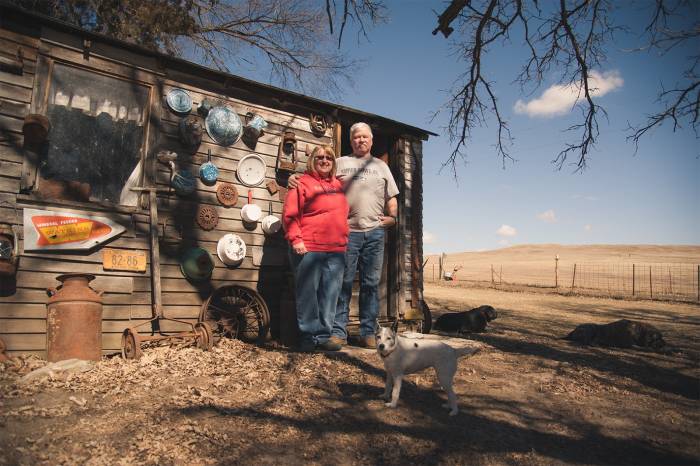Keystone XL is a proposed tar sands pipeline that would connect Alberta, Canada with Gulf Coast refineries carrying around 800,000 barrels per day of tar sands oil across the United States. President Obama rejected the federal permit for this project in 2015 because of the impact Keystone XL would have on our climate. One of Trump’s first moves in office was to reverse Obama’s decision and give TransCanada the federal permit for construction. In November 2017, the Nebraska Public Service Commission voted to give a “conditional” approval of the Keystone XL pipeline, mandating TransCanada use a different route. TransCanada is now scrambling to buy out politicians to move the project forward.
As a means of blocking this pipeline, indigenous communities, landowners, farmers, along with supporting organizations, launched Solar XL – a wave of renewable energy resistance that’s building solar arrays directly in the route of the proposed Keystone XL pipeline – putting clean energy solutions in the path of the problem. The project was launched by Bold Nebraska, 350.org, Indigenous Environmental Network, CREDO, and Oil Change International.

Photo: J Grace Young | Bold Nebraska
On November 20, 2017, the Nebraska Public Service Commission (PSC) rejected the preferred route for the Keystone XL pipeline, but granted a permit for an alternate route through the state, which creates many more obstacles for the company. TransCanada has asked the PSC to reconsider its decision, while Nebraska farmers and ranchers have pledged to continue resisting the project in the courts.
The Solar XL project continues with new installations of solar arrays, led by communities on the ground in Nebraska. Meanwhile, indigenous leaders and their allies launched the Promise to Protect, a call for everyone who can to commit to future resistance along the pipeline route if Keystone XL moves forward. They announced this plan at a gathering in South Dakota for the second signing of a treaty against the expansion of Canada’s tar sands.
The project – and the indigenous communities, landowners, and farmers who are leading the project – are demonstrating the necessary solutions to fighting the climate crisis and keep warming below 1.5°C.
Download the full People’s Dossier on 1.5°C here.